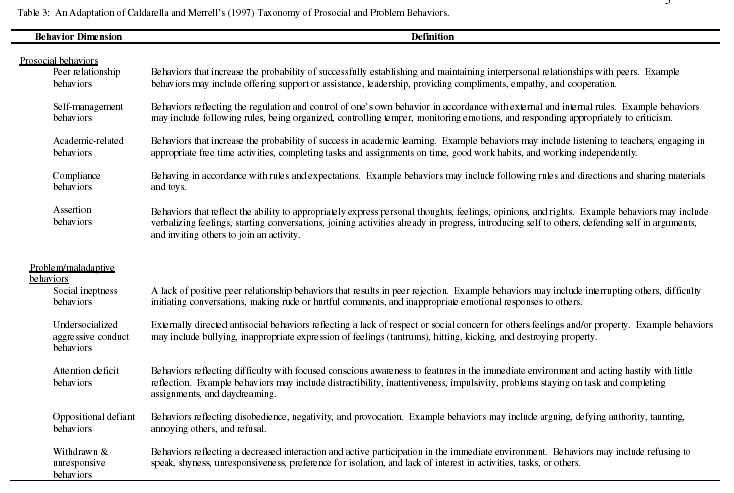The social skill behavioral literature covering
the definition, assessment, and treatment of social abilities
is massive. For the purposes of the current review, an
attempt was made to identify, from the myriad of social skill
taxonomies and models, a taxonomy with an evidence-based
foundation. Although other taxonomies may serve this function
just as well, we adopted Caldarell and Merrell's (1997)
“Taxonomy of Behaviors” as the framework for organizing
the literature on the behavioral component of social/interpersonal
abilities.
Caldarella and Merrell’s Taxonomy of
Behaviors
Briefly, Caldarella and Merrell (1997) completed a
qualitative meta-analysis of the research literature that had
investigated the classification of the dimensions of
children’s problem behaviors and social skills. These
researchers coded and analyzed the empirically based (e.g., factor
and cluster analyses) behavior dimensions that had been identified
in the research literature from 1974 to 1994. According to
Caldarella and Merrell (1997), “more than 22,000 subjects
were represented in the research analyzed through this
review” (p. 264). The review captured, and included,
information from 19 different social skills behavior rating
scales.
Caldarella and Merrell identified 5 dimensions of
positive behavior and 5 negative (i.e., problem/maladaptive)
behavior counterparts. The problem behavior dimensions were drawn
from DSM-IV and a meta-analysis of child and adolescent
psychopathology (Quay, 1986). The 5 positive and 5 problem
behavior dimensions, with some modifications and adaptations, are
briefly defined in Table 3. 

